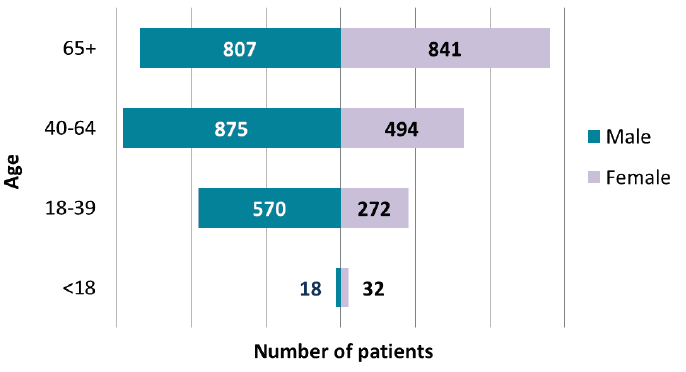Mental Health & Learning Disability Inpatient Bed Census, 2014
Overview of the results of the first Mental Health & Learning Disability Inpatient Bed Census, carried out by the Scottish Government and NHS Boards as at midnight, 29 October 2014. The report provides evidence for Commitment 26 of the Mental Health Strategy for 2012 to 2015, but also enhances the Scottish Government’s and NHS Scotland’s understanding of mental health, addiction and learning disability services, and about the patients who use these services.
This document is part of a collection
Executive summary
"We will undertake an audit of who is in hospital on a given day and for what reason to give a better understanding of how the inpatient estate is being used and the degree to which that differs across Scotland."
- Commitment 26, Mental Health Strategy for 2012-2015[1]
This report presents an overview of the results of the first Mental Health & Learning Disability Inpatient Bed Census, carried out by the Scottish Government and NHS Boards as at midnight, 29 October 2014. The report provides evidence for Commitment 26 of the Mental Health Strategy for 2012 to 2015, but also enhances the Scottish Government's and NHS Scotland's understanding of mental health, addiction and learning disability services, and about the patients who use these services. This analytical evidence will inform policy development and service planning, both nationally and locally.
3,909 patients occupying a psychiatric, addiction or learning disability inpatient bed in an NHS Scotland facility at census

Some key points from this report include:
- There were 3,909 patients occupying a psychiatric, addiction or learning disability inpatient bed in an NHS Scotland facility at the census date.
- Of the 3,909 patients, 58% were Male, 42% were female. Of patients of working age (between 18 and 64 years old), 65% were male.
- The patients in the census were mostly from the adult population. 22% were aged 18-39, 35% were aged 40-64 and 42% aged 65+.
- There were 50 patients aged under 18 in the census.
- Patients were most likely to be in an Acute Ward (41% of all patients). 25% were in a Continuing Care / Long-Stay ward.
- As at the census, there were 4,532 psychiatric, addiction or learning disability inpatient beds available in NHS Scotland. The overall occupancy rate in Scotland was 86%.
- 59% of patients aged 65+ had a diagnosis for dementia. This accounted for 972 patients aged 65+, with a further 77 aged between 40 and 64.
- 482 adult patients had evidence of actual or threatened self-harm upon admission to hospital (17% of all adults in the census for which this information is known).
- There were 507 patients primarily managed by Forensic Services. Forensic psychiatry is a specialised branch of clinical psychiatry which relates to mentally disordered offenders and others with similar problems.
Contact
Email: David Scott / Ellen Lynch
There is a problem
Thanks for your feedback